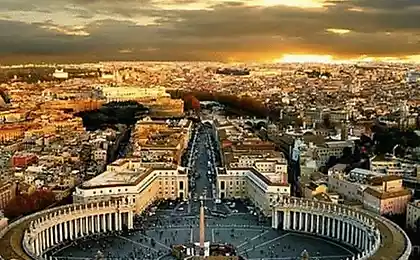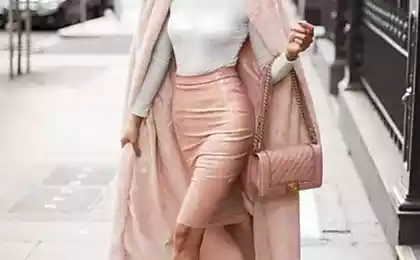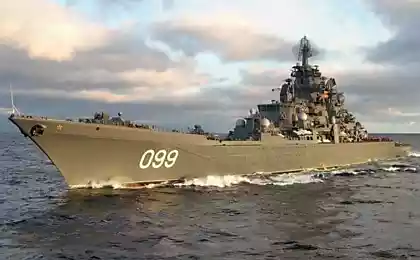485
Petra — the pink city, lost in the rocks
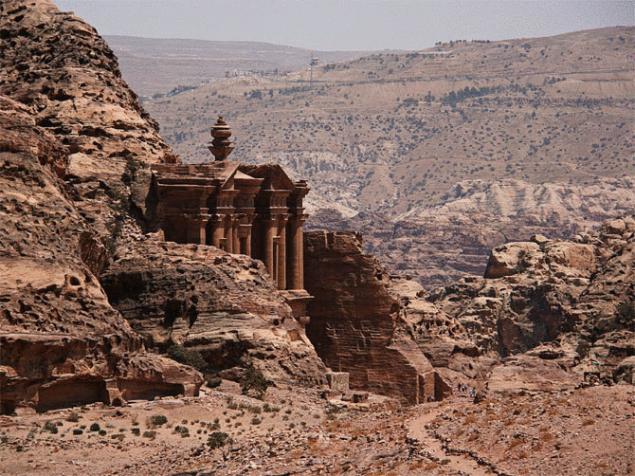
Standing in front of the crack in the 90-metre high cliff — like someone hit it with a huge sledgehammer, but the mountain, the split, still stood. This JIC is one of several ways, leading to Petra, and perhaps the most memorable and exhilarating. Enter into it and feel like Alice down the rabbit hole — so unreal what is happening: the road leads further and further into the pink rocks, and some unknown force stronger and stronger drawn forward, into the unknown. And when, finally, in a narrow cleft appears extraordinary beauty huge pink bas — forget about everything. Here it is, pink Peter! Distant dream of childhood!
The traditional name of Peter, and the Greek Village means the same thing — "the rock" or "stone". And really, she couldn't find a more appropriate name. This is a huge town (once lived here at least 20 000 people) roads, mountains, cliffs, gorges and precipices, which look — and breathtaking! Nature painted them in all colors and shades not just pink and red, but crimson, blue, purple, brown, purple — hard to believe that such a thing happens! A huge number of tombs, their size, and variety stagger the imagination, and I wonder who built all this?

Peter's versatile, it left its traces and the Edomites, Nabateans, and Romans, and crusaders. Now it is the Kingdom of the Bedouins and tourists, but even now get into a Peter — like touch to the mystery, same old as Eternity itself.
For the first time Peter is mentioned in the old Testament. Still not far from it is a wonderful source, which Moses revealed to the Jews during their forty-year stay in the desert. Here, on the mountain of Jebel Harun, and is buried the elder brother of Moses — Aaron. At that time it was a small hadamitzky town, which left almost no trace.
Later Peter came Nabataeans — a mysterious people, about whom very little is known. Here's how Masudi, the Arab historian of the first half of the tenth century, explains the origin of the Nabataeans as: "After the Flood the people settled in different countries. Among them was Nabatean, who founded the city of Babylon, who were the descendants of ham who settled in this region under the leadership of Nimrod, the son of Cush who was the son of ham and grandson of Noah. It happened at a time when Nimrod got control of Babylon as Zahhak sent and called Biorap". H. P. Blavatsky writes that "Nabatean" — the mystic name of the caste devoted to the God of Secret Wisdom, Nebo, which clearly proves that they were of the occult brotherhood. Nabateans who came to Syria from Basra, were the degenerate members of that fraternity.

It Nabataeans gave the world the beautiful architecture of Petra — more than 800 carved into the stone monuments. The first thing you see leaving the sica, is the majestic facade of the Treasury, or the Treasury. Unfortunately, all the monuments of Petra have received their present names in our time, these names have almost nothing to history. So, the Treasury its name to the legend of the treasure of the pharaohs of Egypt, who allegedly was kept in located on its facade the box. Unfortunately, all the urn today is riddled with bullet holes of those who thus tried to call on their heads of the "Golden rain". Most likely, the Treasury is the tomb of Nabataean king Aretas IV. The 40-meter facade is striking in its grandeur and beauty.
In Petra there was a theatre for 3,000 people, and although it is very similar to Roman, it was built during the Nabataean.
The Nabataeans were skilled architects, merchants great and brilliant water engineers. The inhabitants of Petra experienced a permanent shortage of water: two sources available to the city, was not enough. And so from the springs of the valley of the Wadi Musa (valley of Moses) in the rocks were cut through the tunnel, which the city received water. And in case of a siege at the disposal of the Nabataean had indoor stone cisterns to collect rainwater. Everywhere from the rocks to them were the drains, which to this day many are preserved in Peter.
Petra prospered for centuries, and during the reign of Aretas III (I century BC), the Nabateans extended their borders up to Damascus. They traded with China, India, the Far East, Egypt, Syria, Greece and Rome. In Petra bought and sold all kinds of spices, frankincense, gold, iron, copper, ivory, animals, medicines, sugar and much more. It became a crossroads of different cultures and one of the richest cities of the ancient world.
Petra's wealth attracted the attention of the Romans. Their attempts to capture Peter failed, but the Nabataeans had to pay the Roman Empire tribute. For all his strength, Peter could not resist the power of Rome and, in 106 ad became one of its provinces.
But Petra prospered under the Romans: there were new temples, colonnaded street, arch. From all sides, the city merchants, wealth of the city was thriving. Unfortunately, this last flowering did not last long, III V. Peter fell into disrepair. This contributed to a change of caravan routes now passed through Palmyra.
In V and VI century there appeared the Christians, they built a Byzantine Church and was converted into a Church, some tombs. Now you can still see the crosses on their facades. By the time, when in the seventh century came the Arabs, Petra was already completely abandoned.
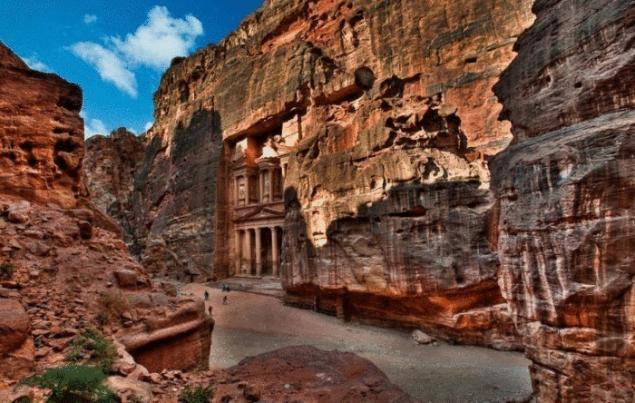
The city came to life for a while with the arrival of the crusaders. In 1100, shortly before become king of the Latin Kingdom, Baldwin helped the monks of St. Aaron to be freed from the Saracens. As king, he found that the South of his possessions, ranging from the fortress of St. Abraham in Hebron, virtually unprotected, and built the fortress of Kerak, Shobak, Tafilah and fortresses in the valley of Moses. Today from the citadel in Petra was only the stairs and stonework. But judging by the location she once proudly towered over the city.
With the departure of the crusaders on the city forgot.
The latter, who visited Petra was the Sultan of Egypt, Baybars. Returning from Cairo, he drove into town and was very impressed.
The newly opened Peter world Swiss scientist and traveler Johann Ludwig Burckhardt, the first European to set foot on this land 600 years after Baybars, in 1811
There are many legends about countless treasures of Petra. She thrived and was the richest city for centuries, and no one has ever seen to a legendary treasure somewhere exported. But still find them so no one and failed. Peter keeping his secret.
... Night is falling. The sun is swiftly sinking, and its last rays of red-pink city seems more beautiful and mysterious — if that's possible. Again, I go to Blackjack, looking at the stars over my head... And I know for sure I will come back for sure! published
Author: Nadezhda Nesterenko
Source: www.newacropolis.ru/magazines/2_2004/Petra_Rozovyi_gorod_/
Robot-humanoid Robotics company Hanson responds to facial expressions of the person
11 the mathematical techniques that You might use in life

